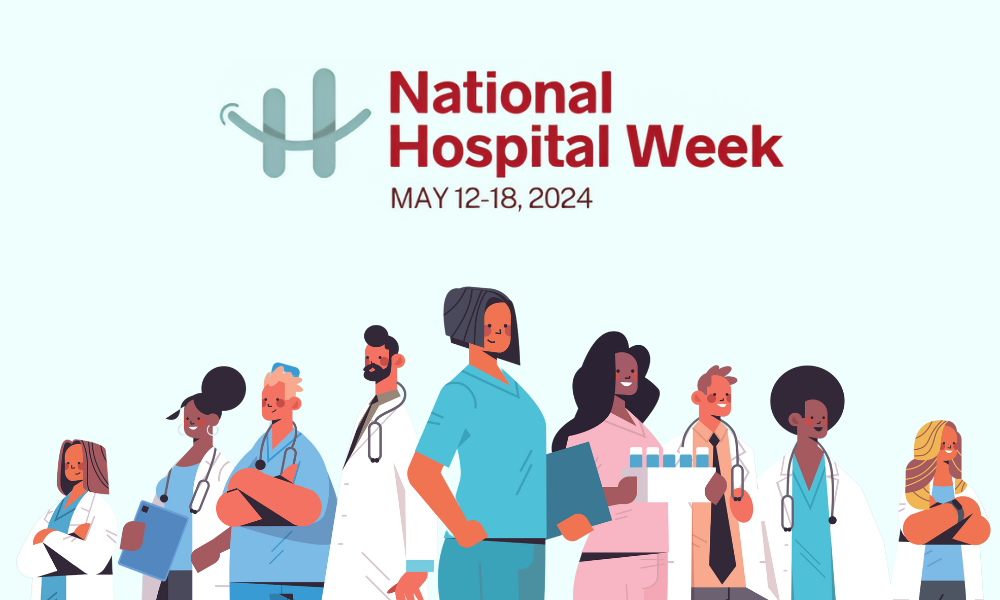Locums CME is a bi-weekly roundup of recent news that matters to locum tenens providers. Stay in the loop on what’s new in the locums industry, and make the most of the locum tenens lifestyle with our fresh finds.
Inflation Cuts Into Physicians’ Pay Increase
(From Healthcare Dive, 5/17/2023)
The median total compensation for primary care physicians increased last year by 4.4%, which was more than double the increase of the year prior. However, the increase was overtaken by inflation, which increased by 6.5% in 2022, according to a new study by the Medical Group Management Association.
MGMA’s physician compensation breakdown came after reviewing nearly 190,000 providers across more than 6,800 organizations in 2022. The report found that physician-owned practices also showed “higher productivity” compared to hospital-owned practices. Also, nonsurgical specialists earned $172,221 based on 185 patient encounters, and surgical specialists earned $96,580 from 65 encounters.
The location of providers also played a role in compensation increases. Primary care physician pay rose 11.43% in the West, 6.53% in the East, 11.29% in the South, and 7.59% in the Midwest from 2019 to 2022. One group did see a significant increase in compensation that was more than inflation–family medicine physicians saw an increase of 10.57%. Urgent care physicians had the smallest increase of 0.13%.
Overall, physician salaries are increasing, and primary care physicians have experienced a 33% increase from 2015 to 2022. Still, the number of physicians who would choose the same specialty again was down in 2023 as compared to 2022 on average, according to data from Medscape’s 2022 and 2023 physician compensation reports.
The macroeconomic environment held back compensation in 2022 from growing further. Inflation, the COVID-19 pandemic, physician burnout, and rising practice costs are a few of the things that have led to physician payment freeze under Medicare. Members of Congress introduced a bipartisan bill aimed at reforming the Medicare payment system.
The unpredictable economic environment continues to hamper salary growth, despite provider compensation trending upward. In the immediate future, healthcare leaders need to work together to develop proactive strategies to recruit and retain the physician workforce in the face of these challenges.
Your Locums Prescription
(From All Star Healthcare Solutions, 5/25/2023)
We have all encountered knowledgeable individuals in school, training, or on-the-job experiences who acted as our mentors. The mentor/mentee relationship isn’t confined to school or training, though.
When a provider signs a contract to begin a locum tenens assignment in hospitals, private practices, clinics, or other healthcare organizations, there are countless opportunities to interact with an eclectic group of colleagues and acquaintances and have plenty of opportunities to observe how they work.
Establishing a mentor relationship while serving in a locum tenens position requires a more proactive progression than what may transpire as a full-time staff member. The American Medical Association defined five steps to forging successful mentor connections.
1. Seek out mentors: Finding a mentor in a short timeframe requires providers to be open and willing to initiate contact with that person early on. Explain why you want to learn from them and then make arrangements to contact them after the contract ends.
2. Look for variety: Different mentors fill different roles in personal and professional life. Choosing a variety of mentors in different stages of a provider’s career helps contribute to different aspects of their professional and personal development.
3. Match to the current situation: Find a mentor that’s right for the current assignment by considering their experience and ability to provide specific insights. Look for someone with insight into regional, cultural, and other pertinent information about patient treatment in that facility.
4. Don’t force it: Not every locum tenens situation will lead to a mentor—don’t worry if the current situation isn’t the right one. Expanding professional networks by making these connections is still important. Also, it doesn’t hurt to make a friend or two on the job.
5. Expand the definition of mentor: Mentors can extend beyond the professional realm and inspire other areas of your life.
It might seem like a futile endeavor to build a connection with a mentor in a short timeframe like a locum tenens assignment, but finding the right mentor helps in all aspects of life. After all, providers are more than just a job, and the people encountered in each locum tenens assignment can serve as an inspiration in other areas of life. Be open to the opportunity of finding those mentors because they will make each locum tenens experience more worthwhile.
(From Weatherby Healthcare, 5/27/2023)
Some of the benefits of locum tenens might be the biggest draw to physicians–flexibility, better pay, and work-life balance–but for others, it comes with a difficult decision to make. It’s not always easy to hop on the next plane out of town and spend weeks away from family and friends.
However, traveling far away as a locum tenens provider isn’t the only option. It’s possible to find locum tenens assignments close to home instead of in some far-flung destinations. Here are some benefits that make it a no-brainer for physicians who want the locums flexibility without the travel requirements.
- Increase income and keep a full-time job: One example of this is Dr. Mark Kowalski, an orthopedic surgeon, who chose to take local weekend assignments that were manageable and fit his schedule. Dr. Kowalski said government regulation made it more difficult for him to survive with only a private practice salary. He decided to moonlight locum tenens assignments close by, and those lucrative side gigs helped him bring some extra income home to his family.
- Get valuable inside intel on other practice settings: Doctors can use locum tenens opportunities to drop into different places and see how things run. That gives them some insider knowledge of the workings of various institutions, and then they can take some of the best practices back home to implement at their practice.
- Achieve a better work-life balance: By choosing opportunities close to home, providers can travel back and forth to see family and friends, shorten the length of assignments, and take some time off before the next assignment. Those local locum tenens assignments help a provider get time at home to take care of household responsibilities on top of work assignments.
- Tangible opportunities for professional development: The diversity of assignments in these local areas allows physicians to take on new challenges. For example, a doctor who specializes in surgical care may take a locums assignment on the medical or diagnostic side of medicine. Those are valuable opportunities to get experience and knowledge that make a physician more well-rounded.
When a physician chooses to take a locum tenens assignment close to home, they get all of the advantages of the flexible opportunities they seek within driving distance of their home or where they currently practice. There’s no reason to let travel dissuade providers from taking a locum tenens opportunity.
Physician Wellness Retreat
(From Medical Economics, 5/23/2023)
The 2023 Consolidated Appropriations Act in the United States introduced changes to the federal Anti-Kickback Statute (AKS) and Physician Self-Referral Law (commonly known as the Stark Law) to help address the staffing crisis by targeting the mental health and well-being of healthcare professionals.
These changes aim to protect arrangements where hospitals and other entities provide mental health improvement, behavioral health improvement, or maintenance programs to physicians and clinicians. This new law requires programs to meet specific criteria—they need to be evidence-based, available to all practitioners, and not contingent on referrals or business generated for the entity.
These statutory protections can be crucial for healthcare entities as they face risks under the AKS and Stark Law when providing benefits to individual providers. Without these protections, providing mental health wellness programs could be considered an improper payment with referrals to federal healthcare programs. The new law allows various healthcare entities like hospitals, ambulatory surgery centers, community health centers, and skilled nursing facilities to offer these protected mental health programs.
The healthcare provider community welcomes these protections as healthcare workers struggle with mental health issues and burnout. More than 20 million US healthcare workers are at risk for mental health problems, and the shortage of physicians and nursing staff exacerbates the strain on the healthcare system and limits access to care.
(From Medical Economics, 5/15/2023)
A Cochrane Review study found interventions used to treat stress management for healthcare workers can lead to improvements up to a year later.
The review of 117 interventions included cognitive behavioral training, assertiveness training, relaxation techniques, mindfulness meditation, exercise, massage, acupuncture, and listening to music. These interventions effectively improved stress levels for healthcare workers experiencing “low to moderate levels” of stress and burnout.
While the study emphasized the positive effects of individual stress reduction interventions, the researchers also noted the importance of improving working conditions to address work-related stress. Those workplace factors affecting mental health include understaffing and “anti-social shift” working patterns, a name given to late-night working shifts where workers interact with fewer colleagues.
The study recommended that employers should provide a range of stress interventions for employees but also acknowledged that the long-term effects of these interventions are still unknown. Additional work needs to be done to determine the most effective approaches for reducing work-related stress for healthcare workers.
Socially Speaking
From LinkedIn
From Twitter
From Facebook
Doctor’s Notes
(From Medical Economics, 5/17/2023)
The use of jargon, acronyms, and stock images in healthcare can create a disconnect between patients and caregivers. Trust and respect are often primary concerns for lower-income patients in the healthcare system, and physicians can use honest storytelling to humanize healthcare issues and help build trust.
Honest communication and trust-building are central tenets of public health, as highlighted by the COVID-19 pandemic. The healthcare industry can take steps to abandon jargon and tell more humanizing stories that personalize healthcare experiences. Stories can change minds and shift the narrative surrounding healthcare issues.
Listening is also an essential aspect of storytelling. Patients feel heard and understood by asking clinicians to share their experiences, which also creates an emotional connection.
By abandoning jargon and embracing the power of stories, healthcare can create a more human-centered approach that resonates with individuals on a deeper level.
(From Medicus Healthcare Solutions, 6/7/2023)
The current shortage of anesthesiologists and CRNAs is impacting hospitals, healthcare systems, and patients. Healthcare organizations need to prioritize addressing the staffing gap to maintain high-quality patient care, ensure incoming revenue, and optimize operating room utilization.
In the field of anesthesia right now, there are:
The Association of American Medical Colleges (AAMC) predicts that there will be a shortage of about 12,500 anesthesiologists, which is a decrease of 30% of its current active staff, and CRNAs are expected to see significant drops as well, particularly in rural communities.
Healthcare organizations are turning to locum tenens anesthesia providers to fill critical roles and supplement the existing staff. Locum anesthesia providers have also started using AI-based technology in their healthcare organizations to improve operating room utilization, reduce costs, and enhance efficiencies.
Anesthesiologists reported a high burnout rate in 2022 at 47% due to a general lack of control or autonomy in their lives and excessive working hours. CRNAs also reported feeling burned out, with 56% sharing this sentiment.
Healthcare organizations need to work together to address the critical population of anesthesia care in the healthcare community by offering a supportive and flexible work environment to hopefully retain anesthesia staff.
(From Healthcare IT News, 5/17/2023)
Artificial Intelligence (AI), particularly generative AI like ChatGPT, holds promise in addressing the challenge of patient engagement in healthcare by automating monotonous tasks such as answering patient queries, assisting with clinical decision-making, and streamlining administrative processes.
Healthcare IT News interviewed Michael Haas, technology management consulting manager in RSM US’s healthcare industry practice, to discuss AI’s role in patient engagement.
AI can alleviate the burden on physicians and free up their time for patient care, Haas says. For example, physicians spend a significant amount of time on documentation and administrative tasks, leading to burnout and potentially compromising the quality of care. ChatGPT can help streamline these tasks, allowing physicians to focus on patient care and reduce errors.
ChatGPT enables efficient content creation, helping organizations reach their target audience effectively, Haas says. This AI tool accurately translates medical terminology, provides patients with personalized treatment plans and instructions, and streamlines tasks like scheduling, internal communications, and addressing patient queries. By doing so, ChatGPT enhances the patient experience and improves healthcare delivery.
Haas does stress the importance of practicing caution implementing ChatGPT or similar AI technologies in healthcare settings. The technology is still new, so organizations must ensure the efficiency and accuracy of ChatGPT’s interpretations and communications. Gradual implementation through phased rollouts, starting with test patients, can help validate the accuracy of communication and data and mitigate potential risks.
(From Physicians Practice, 5/31/2023)
Despite technological advancements made in clinical environments, many physicians still struggle to get access to “whole health” data.
“Whole health” data refers to information that, when combined with clinical data, empowers practices to improve patient outcomes and excel in value-based care models. This data includes social determinants of health (SDOH) data, mental and behavioral health insights, and data collected through mobile devices. SDOH data is essential because this type of data reveals the impact of social factors on health outcomes—and research shows that 80% of an individual’s health is determined by factors other than access to quality care.
Mental health data is also essential because mental health issues often coincide with physical health conditions and affect treatment compliance. Mobile device data has become increasingly important, especially during the pandemic, with smartphones being the primary communication channel and mobile applications tracking patients’ progress.
Incorporating “whole health” data into healthcare efforts requires partnerships with experts who understand regulatory issues and data management and use artificial intelligence and machine learning tools for data analysis.








